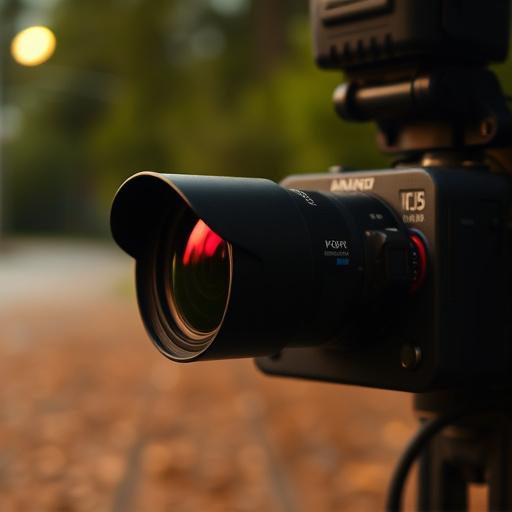Understanding covert recording equipment requires knowledge of various hidden camera systems, with critical considerations for video quality, placement strategies, and detection methods. Balancing privacy protection and high-quality footage is key in both equipment selection and deployment. Legal and ethical guidelines emphasize consent and responsible handling of footage to prevent privacy breaches, especially in sensitive environments like homes. A hidden nanny cam video quality comparison highlights the importance of these factors for effective surveillance while maintaining discretion and respecting privacy expectations.
In an era where privacy concerns are paramount, understanding covert recording equipment placement and detection is crucial. This comprehensive guide delves into the intricate world of hidden cameras, exploring not just their installation strategies for optimal video quality and privacy but also advanced detection methods. From legal considerations surrounding nanny cameras to a detailed Hidden Nanny Cam Video Quality Comparison, this article equips readers with essential knowledge in today’s surveillance landscape.
- Understanding Covert Recording Equipment: A Comprehensive Guide
- Placement Strategies for Optimal Video Quality and Privacy
- Detection Methods: Uncovering Hidden Cameras
- Legal Considerations and Ethical Use of Nanny Cameras
Understanding Covert Recording Equipment: A Comprehensive Guide
Understanding Covert Recording Equipment involves recognizing the variety and sophistication of devices designed to capture video and audio discreetly. From small, virtually invisible hidden nanny cams to more advanced hidden camera systems with night vision capabilities and motion detection, these tools can be incredibly effective at gathering evidence or monitoring activities without anyone’s knowledge.
When considering a Hidden Nanny Cam Video Quality Comparison, it’s crucial to assess not only the resolution but also the lighting conditions in which the camera will operate. Some devices excel in low-light settings, offering crisp images even in dimly lit spaces, while others might be better suited for well-lit environments. Additionally, features like motion activation and data storage options play significant roles in ensuring both effective recording and secure access to captured footage.
Placement Strategies for Optimal Video Quality and Privacy
When it comes to covert recording equipment placement, the goal is to capture high-quality video while maintaining optimal privacy. One effective strategy for achieving this balance involves positioning cameras in areas that offer both unobstructed views and minimal risk of detection. This might mean mounting them on ceilings or walls where they can record clear footage without being easily visible. For instance, a hidden nanny cam placed discreetly near a doorway or window can provide valuable surveillance while preserving privacy, as long as it’s not clearly marked.
Another placement strategy leverages the natural environment to hide the equipment. Cameras can be nestled in plants, attached to trees, or mounted on poles that look like garden accessories. This hidden nanny cam video quality comparison often reveals that these stealthy setups can deliver surprisingly good footage, making it a popular choice for those prioritizing both surveillance and discretion.
Detection Methods: Uncovering Hidden Cameras
Detection hidden cameras, often referred to as nanny cams, has evolved significantly with advancements in technology. One of the primary methods involves visual inspection using specialized equipment like infrared cameras and UV lights, which can reveal camera lenses that might be imperceptible to the naked eye. These tools are particularly useful for professionals conducting security audits, ensuring no hidden devices are present.
Additionally, digital forensics experts employ software capable of analyzing video feeds frame by frame to detect anomalies or artifacts that could indicate the presence of a covert recording device. This method is crucial when dealing with high-quality hidden nanny cam videos, as subtle visual clues may be the only evidence exposing their location.
Legal Considerations and Ethical Use of Nanny Cameras
When considering covert recording equipment, particularly nanny cameras, it’s crucial to navigate a delicate balance between privacy and security. Legally, many regions have strict guidelines regarding hidden cameras, focusing on consent and reasonable expectations of privacy. Installing a device for surveillance without the knowledge or permission of individuals within a space can be illegal and unethical.
The use of nanny cameras raises ethical questions, especially concerning their impact on personal privacy and potential misuse. High-quality hidden nanny cam videos, while offering clarity, must be used responsibly. It’s essential to ensure that any recorded footage is stored securely and accessed only by authorized persons to prevent unauthorized distribution or invasion of privacy. Ethical deployment involves open communication about surveillance and obtaining consent from all parties involved, especially in homes where individuals have a reasonable expectation of privacy.
Covert recording equipment, while offering valuable insights for security and surveillance, raises important legal and ethical considerations. Understanding the nuances of placement, detection, and privacy is essential to ensure compliance and maintain trust. As technology advances, staying informed about the latest advancements in both hidden camera technology and detection methods is crucial for consumers and professionals alike. When used responsibly, tools like nanny cameras can enhance safety; however, a thorough understanding of their implications is necessary to prevent misuse and protect individual freedoms. A balanced approach that leverages technology while adhering to legal boundaries ensures a safer and more transparent environment.
